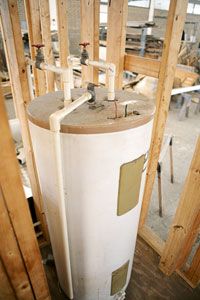A water heater should do exactly what its name suggests: heat water and supply your house with hot water. While heating water, minerals and other sediments settle at the bottom of the heater. This process is the main reason you need to know how to drain a hot water tank.
If you live in an area with hard water, the sediment builds up rather quickly and will clog the water heater's drain valve and damage the heater. That's why draining and flushing your water heater at least once a year is so necessary.
Advertisement
While a professional plumber will be all too happy to charge you for this service, draining a hot water tank can be an easy task for DIY enthusiasts. In this article, we'll outline why draining a water heater tank is so important, the tools you'll need for the job, and the steps you'll take to finish the job yourself.


